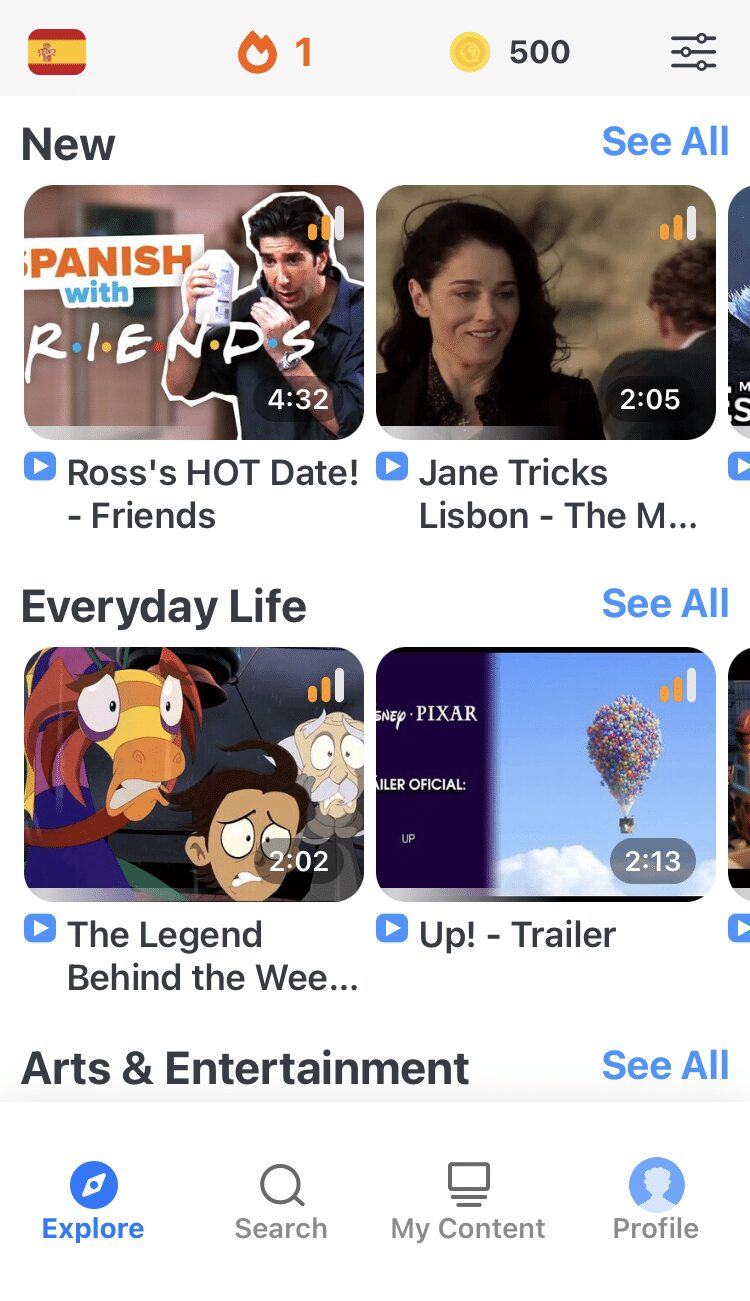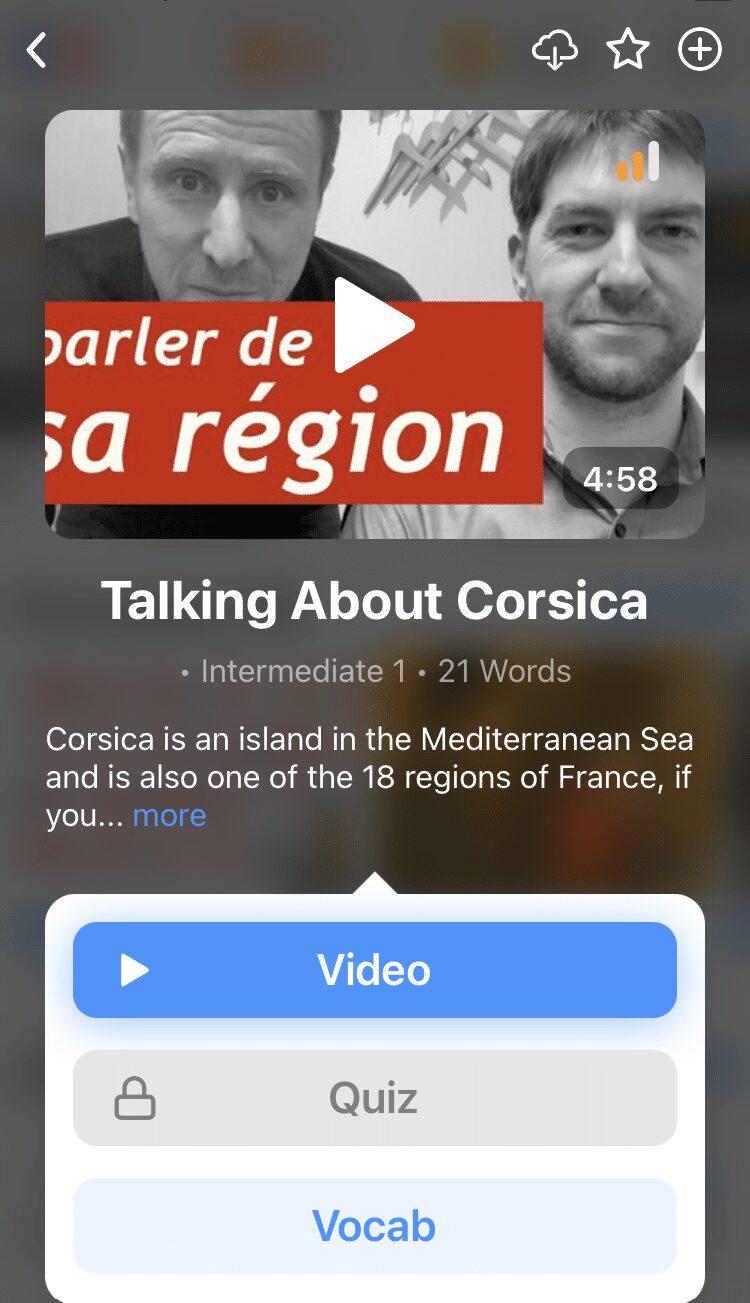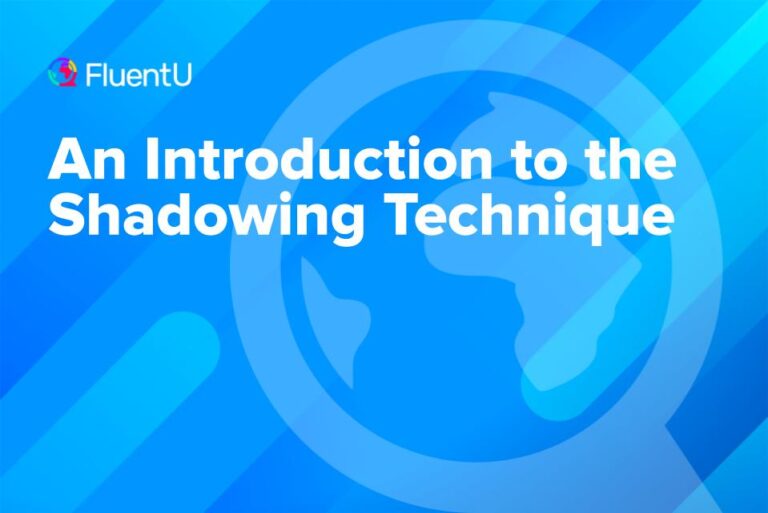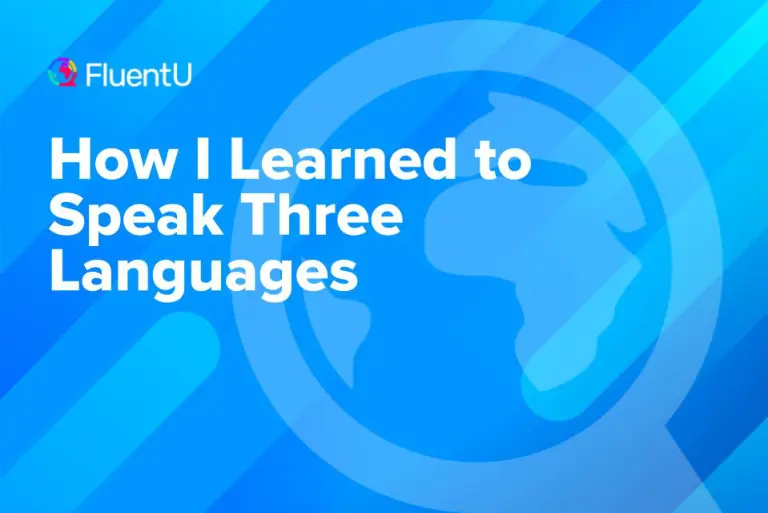Contents
- 1. Master the Basics Before Grammar
- 2. Pay Attention to Word Order
- 3. Assemble Your Grammar Gear
- 4. Keep Materials Handy
- 5. Read What You Enjoy
- 6. Settle In and Watch Videos
- 7. Fit Practice into Every Part of Your Day
- 8. Study in Short, Frequent Intervals
- 9. Grab Your Paper and Pencil
- 10. Use Grammar in Real Conversations
- 11. Learn Grammar with Games
- Principles of Grammar in Modern Language Learning
- Obstacles to Avoid When Learning Grammar
- And One More Thing...
11 Steps to Learn Grammar in a Foreign Language

Imagine how much more efficient you could be at learning your target language(s) if you knew how to approach learning the modern way. Traditionally, language learning was centered around memorizing grammar, but modern language learners have different views and take different approaches.
So how can you learn grammar in a foreign language the modern way and far from the traditional approach? Read on and learn.
Download: This blog post is available as a convenient and portable PDF that you can take anywhere. Click here to get a copy. (Download)
1. Master the Basics Before Grammar
When basic skills are mastered, address grammar. But not before then.
Get your feet under you and feel comfortable with this new adventure. Don’t stress about grammar until you’ve got a grip on the so-called basic skills of listening, repeating and understanding some of the new language.
How to get the basics under your belt? Time and effort. Put in the time to listen, pause, repeat and listen some more. If you don’t understand something, go back and either redo a lesson, read a chapter over again or find another method (like a video or graded reader) to reinforce the rudimentary aspects of the new language.
2. Pay Attention to Word Order
By speaking, reading and listening, language construction will become moderately apparent. For example, word order, gender assignations and article placement can all be gleaned through basic study without particular attention to “grammar” per se.
At first, just make mental notes of how words appear in sentences. Try to pick up on general patterns, without consulting a grammar book for the specific rules that dictate them. You’ll be surprised by how much you’re learning, without busting your brain cells.
3. Assemble Your Grammar Gear
Don’t try to learn a language without a good dictionary and conjugation resources. All are readily available online or for free in libraries so there’s no excuse for not having what you need.
For example, ECTACO is a free online multi-language dictionary that’s very handy for a quick reference in any of more than two dozen languages!
If you’re into e-books, which can be super convenient for language learners and eliminate the tedium of flipping through endless pages to find what you’re looking for, check out the quality (and less expensive) grammar books and dictionaries available for a variety of languages on VitalSource. Their Bookshelf app is a convenient way to access and read any of your learning material whenever you need it.
4. Keep Materials Handy
You should always have your resources at hand! It’s easy to find the answer to a question when everything is at your fingertips.
Use a mobile translation app and you’ll never wonder what something means or if you’re using a phrase correctly. Some of them can demystify text, websites and conversations in over 100 languages.
5. Read What You Enjoy
Reading is a perfect way to conquer grammar. It exposes us to grammar in its natural context. Seeing the rules used in black and white really puts the focus on what you’ve already absorbed.
There are books in all genres and with something to appeal to every taste, available online and through libraries.
And yes, reading in a foreign language is difficult. But it’s easier when you read what you love. The key is to read what you would normally read in English.
For example, if you like cooking, you can read food magazines in your target language. A relaxed approach is best. So, open the umbrella, stretch out on the lawn chair, get the lemonade and read what you love with the breeze blowing around you.
6. Settle In and Watch Videos
That’s right, videos are part of your grammar demystification kit.
Hearing a language gives a learner the ability to catch the cadence and nuances of the spoken word. Also, hearing morphology and syntax in action definitely beats reading about it in a book!
Videos about verb conjugation and other grammar topics are also available on YouTube in many languages. It’s well worth your time to check out what’s available in your language, such as:
- Spanish — The Spanish Dude uses his channel to dig deep into Spanish verb conjugations and other vital grammar topics, and he does so with personality, engaging visuals, real-world topics and loads of humor.
- French — Learn French with Vincent is a channel designed for learners at all levels, from beginner to advanced. Vincent is a fun host but the lessons are often demanding and set up in a progressive manner that brings skills to new levels in a logical order.
- German — Deutsch für Euch is geared toward native English speakers. It focuses on explaining grammar so this one is a huge asset to the grammar learning kit.
- Italian — Torre di Babele has been in operation since 1984 and is a language school authorized by the Italian Ministry of Education. Its Italian language courses are filled with informative cultural tidbits, reviews about events in and around Rome and wine-tasting tips. There’s something for everyone on this channel.
- Japanese — Learn Japanese From Zero! is a YouTube channel that can either be used in conjunction with the online “From Zero!” books and courses or on its own. The host is a guy named George who’s witty and engaging and who explains the language in small steps that make it easy to learn. He even brings his cat to some of the lessons!
- Chinese — AskBenny is not a new series but it’s still very useful. Benny tackles necessary subjects including food, weather and other basic concepts. His sense of humor translates well and the videos are short, entertaining clips.
- English — Anglo-Link covers all aspects of English language learning and puts an emphasis on building confidence through increased fluency. The 650 million-plus views say it all: This channel does a good job and keeps learners coming back.
And it’s a snap to locate similar resources for almost any other language, too.
Another way to learn grammar in a foreign language is by going to the movies!
Grab some popcorn and your beverage of choice, and sit in a movie theater for a couple of hours. Hearing a language spoken illustrates proper word placement. We learn by example!
7. Fit Practice into Every Part of Your Day
It’s very important to practice as often as possible.
In the car or at home alone? Speak aloud or sing.
Waiting in line at the grocery store? Whip out your phone, pull up a translation app and pop in a few words. Memorize them before it’s your turn to check out.
Challenge yourself to recall the last lesson you worked on without referring back to it. Practice pulling the information from your mind. It’s in there, you just have to work on getting it front and center.
There’s no substitute for a good practice session. Use the language daily. Repetition simply drills the basic rules into our heads through usage.
8. Study in Short, Frequent Intervals
Six 10-minute sessions of grammar practice are better than one hour straight through. We learn best in short segments. And language is learned by frequent repetition.
Good language learners study in small, frequent intervals for optimal results. Many language learning platforms allow you to set goals for how long you learn per day or how much XP you earn, to help you stay on track.
The language learning program FluentU, for instance, does this: It chunks learning into small portions for you.
FluentU takes authentic videos—like music videos, movie trailers, news and inspiring talks—and turns them into personalized language learning lessons.
You can try FluentU for free for 2 weeks. Check out the website or download the iOS app or Android app.
P.S. Click here to take advantage of our current sale! (Expires at the end of this month.)
Whip out your phone (or notebook, or whatever your learning tool of choice is) and spend at least five minutes per day on your studies to see results quickly.
9. Grab Your Paper and Pencil
This one goes along with the speaking and reading hints — writing is one of the best ways to reinforce what we’re learning!
Implementing all the skills you’ve already learned will solidify the rules. Writing helps so much so even if you struggle in the beginning, keep at it. Eventually, it will become second nature, as it did with your native language.
Something I do on a regular basis is to keep a journal in a foreign language. It’s great practice and I often surprise myself by knowing more vocabulary than I realized. Why not give it a try?
If journaling isn’t your thing, why not start a blog? Blogs can either be private or public, but I suggest going public. After all, you probably have a lot to offer readers. And knowing that other sets of eyes will be perusing your words is a built-in incentive to do your best work.
Make a commitment to post every day or at least every other day, and you’re almost guaranteed to step up those grammar and writing skills.
10. Use Grammar in Real Conversations
The best way to learn something is to do it. We learn better by using what we learn than by letting our new information collect dust in our brain cells.
A good approach to learning (and remembering grammar) is to use the one grammar concept you last learned in a conversation five times within the next day. Then learn the next concept. Then use it five times in conversation. Keep repeating this process and you’ll program grammatical patterns into your use of the language.
This is better than memorizing five concepts, using one, then forgetting four. Instead of learning five and then using one, try to learn one and then use it five times. It may be only one. But one concept remembered is better than ten forgotten concepts.
11. Learn Grammar with Games
Make grammar a game. Yes, a game!
It’s almost inevitable that when we have fun, we learn more easily. Without the pressure of “needing to learn,” playtime becomes one of the best teaching devices.
So bring some excitement to the language learning table! Laugh, compete and play like you’re a kid! It’s all good because when you learn, you win—there’s no losing here, friends!
Download some apps or games—even if they’re not designed to teach grammar skills, playing and seeing language in motion reinforces the lessons you’ve learned.
My favorite is Duolingo. I have it (and still use it).
You can find out more about Duolingo here.
Principles of Grammar in Modern Language Learning
Grammar is a side dish, not the main course
Modern language learners understand that grammar is the glue of language, and modern technology has adapted to this understanding. One example is Grammarly, a convenient grammar checker for your browser that checks your English writing for errors whenever you type anything online.
Technology like this shows that we know grammar still matters for clarity, but we also don’t want to have to think about it all the time.
Phrases, vocabulary and conversation are the key ingredients in language. Grammar is important. But its function is to hold all the other parts together.
We, modern language learners, don’t overwhelm ourselves with the grammar that holds all the pieces of our language learning together. We don’t ignore or overlook it, but we don’t emphasize it above other language learning aspects either. We simply combine all components of language and use grammar to glue them together.
We emphasize conversation and see grammar as simply a tool to help us accomplish that goal.
You don’t have to know it all
After you master one element of grammar, another one will pop up. If you learn all the ones that pop up, then the first one you learned will have changed because languages constantly evolve.
Modern language learners avoid discouragement by taking it easy and viewing grammar as a journey, not a destination. We learn as we go, make mistakes along the way and try to take a relaxed approach to whatever language we’re learning.
This approach makes learning language fun and keeps the stress at bay. The modern way is to do it without the pressure and enjoy the ride.
Conversational grammar is still grammar
There’s a difference between conversational grammar and academic grammar. Just because something is not grammatically correct in writing, doesn’t mean it’s “wrong” to say it a certain way in conversation. In fact, speaking a language in perfect academic grammatical patterns will give away your “foreigner status” quicker than an accent.
The key to learning grammar is to give yourself a break and know that conversational grammar is still an acceptable form of grammar to learn. It’s okay to say things the way natives say them even if writing that way wouldn’t be acceptable.
Traditionally, language learners forced grammar lessons on themselves, then tried to speak the way the academic grammar demanded. This makes conversation sound forced and unnatural.
Modern language learners converse with comfort and accept conversational grammar as an acceptable form of grammar to use in daily practice.
Now that we’ve looked at the three ideas that shape modern language learners’ approach to learning grammar, we also need to consider the three things modern linguists avoid when learning grammar.
Understanding these obstacles and getting beyond them is also essential to transition from the traditional approach to learning grammar to a more modern method.
Let’s look at each one of these thoughts together.
Obstacles to Avoid When Learning Grammar
Getting overwhelmed with textbooks
Textbooks are excellent resources. They provide a wealth of information on many different aspects of a language. And with so much information in front of one’s face, it’s easy to get overwhelmed and feel like learning the language is next to impossible.
Modern language learners use textbooks and other valuable resources. But we never let them overwhelm us.
Focusing too much on grammar
It’s important to learn grammar but not study it too much. Vocabulary, conversation and comprehension are essential along with grammar. A good metric is to use about 25% of your study time to learn grammar. The other 75% should emphasize fun audio listening and engaging conversations with people who speak the language.
Language in its natural form is never learned from grammar charts and vocabulary lists. Not that those are bad. But consider that language is naturally learned in context. It’s developed in relaxed, conversational settings.
Children make plenty of grammar mistakes but continue to learn the language by emphasizing natural, real-life conversation. They relax and learn it naturally without getting too focused on mastering grammar.
Modern language learners take the same approach.
Falling for get-fluent-quick schemes
When we say “modern,” we don’t mean quick or effortless. We simply mean different than before. Language learning requires effort, and it takes time.
Anything promising to have you master grammar in 10 days or less can leave you discouraged. You didn’t even learn to tie your shoes in 10 days or less — that took your entire kindergarten year to figure out!
Modern language learners avoid the three-week guarantee propaganda and focus on conversational skills in a relaxed, but consistent manner. We push day in and day out towards the goal and eventually achieve the results we’re after.
Modern language learning takes the pressure off, focuses on conversation and makes learning languages fun. As modern language learners, now you know how to learn grammar in your target languages by reading what you enjoy, studying in short intervals and using what you learn in real conversation.
And besides, learning modern grammar in real-life conversation will keep you from sounding like a professor from the 17th century!
Download: This blog post is available as a convenient and portable PDF that you can take anywhere. Click here to get a copy. (Download)
And One More Thing...
If you dig the idea of learning on your own time from the comfort of your smart device with real-life authentic language content, you'll love using FluentU.
With FluentU, you'll learn real languages—as they're spoken by native speakers. FluentU has a wide variety of videos as you can see here:
FluentU has interactive captions that let you tap on any word to see an image, definition, audio and useful examples. Now native language content is within reach with interactive transcripts.
Didn't catch something? Go back and listen again. Missed a word? Hover your mouse over the subtitles to instantly view definitions.
You can learn all the vocabulary in any video with FluentU's "learn mode." Swipe left or right to see more examples for the word you’re learning.
And FluentU always keeps track of vocabulary that you’re learning. It gives you extra practice with difficult words—and reminds you when it’s time to review what you’ve learned. You get a truly personalized experience.
Start using the FluentU website on your computer or tablet or, better yet, download the FluentU app from the iTunes or Google Play store. Click here to take advantage of our current sale! (Expires at the end of this month.)











